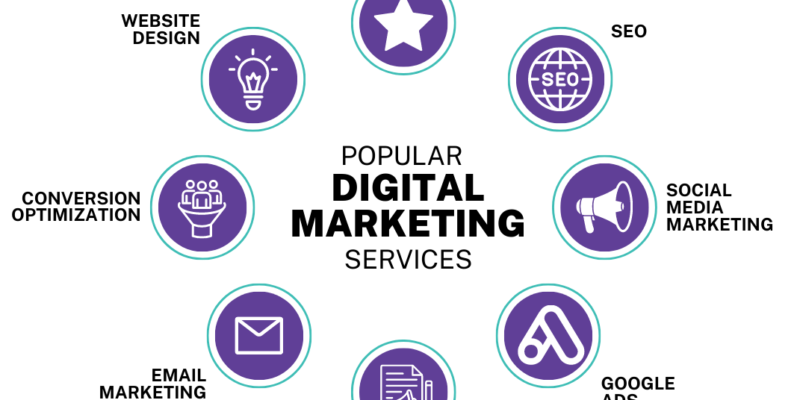
The world of digital marketing is a dynamic one. Trends evolve, platforms shift, and what worked yesterday might not land tomorrow. It’s a constant dance of adaptation and innovation. To stay ahead of the curve, it’s vital to prepare for various scenarios that might arise. In this blog, we’ll dive into some common digital marketing scenarios and explore strategies to navigate them effectively.
Scenario 1: Shifting Audience Preferences
Technology advancements and changing demographics create evolving consumer needs and preferences. Today’s audience might favor short-form video content like TikTok over long-form blog posts. Here’s how to adapt:
- Stay informed: Regularly research audience trends on social media, marketing publications, and industry reports. Tools like Google Trends can reveal popular searches and interests.
- Embrace new formats: Experiment with new content formats like podcasts, live streams, or interactive quizzes to cater to changing preferences.
- Content repurposing: Repurpose existing content into different formats. For example, a blog post can be turned into a short video script or a series of social media posts.
- A/B testing: Test different content formats and channels to see what resonates best with your audience. A/B testing allows you to compare two versions of content and see which one performs better.
Scenario 2: Algorithm Updates and Platform Changes
Social media platforms are notorious for tweaking their algorithms, impacting how content is displayed. Be ready to adjust your strategies when this happens.
- Focus on value: Create high-quality content that provides value to your audience, regardless of the algorithm. This could be informative blog posts, entertaining videos, or engaging polls.
- Diversify your channels: Don’t rely solely on one platform. Build a presence across various channels like Instagram, YouTube, and LinkedIn to reach your audience wherever they are.
- Community building: Foster a strong community around your brand. Encourage user-generated content and interact with your audience to maintain engagement.
- Stay updated: Subscribe to platform updates and marketing blogs to stay informed about algorithm changes and adapt your strategy accordingly.
Scenario 3: Competitive Landscape Shifts
The digital landscape is filled with competitors vying for the same audience. Here’s how to stand out:
- Differentiate your brand: What makes your brand unique? Focus on your brand voice, values, and mission to create a distinct identity.
- Identify your niche: Narrow down your target audience. By focusing on a specific niche, you can tailor your content and messaging to resonate better.
- Competitive analysis: Research your competitors, understand their strengths and weaknesses, and find ways to differentiate your brand offering.
- Collaboration: Explore co-marketing opportunities with complementary brands to reach new audiences.
Scenario 4: Budget Constraints
Digital marketing doesn’t have to break the bank. Here’s how to make an impact even with a limited budget:
- Content is king: Invest time in creating valuable, shareable content that attracts organic traffic.
- SEO optimization: Optimize your website and content for search engines to improve organic traffic. Learn basic SEO techniques and utilize free resources.
- Email marketing: Email marketing offers high ROI (Return on Investment). Build an email list and nurture leads with targeted campaigns.
- Leverage free tools: Utilize free online tools for content creation, social media scheduling, and basic analytics.
Scenario 5: Negative Public Perception
Every brand can face negative publicity. Here’s how to handle it:
- Quick response: Respond to negative comments and reviews promptly. Acknowledge the concerns and offer solutions or explanations. Be transparent and empathetic.
- Monitor social media: Stay on top of negative sentiment online. Respond constructively and address concerns.
- Proactive communication: If a major issue arises, address it head-on with a clear, concise, and honest public statement.
- Reinforce positive messaging: Focus on promoting positive customer experiences and brand values to counter the negativity.
Scenario 6: Emerging Technologies
The digital landscape is constantly evolving with new technologies like Artificial Intelligence (AI), voice search, and Augmented Reality (AR). Staying ahead of the curve can give you a competitive advantage.
- Stay informed: Follow industry publications and attend conferences to learn about the latest digital marketing trends and technologies.
- Experimentation: Experiment with new technologies and see how they can be integrated into your marketing strategy.
- Upskilling: Encourage your team to acquire new skills to adapt to emerging technologies and their applications in digital marketing.
Adaptability: The Key to Success
These scenarios highlight the importance of remaining adaptable in the ever-changing digital marketing landscape. By being proactive, informed, and willing to experiment, you can navigate challenges, capitalize on opportunities, and stay ahead of the competition.










